Basics of General CNC Machining Tolerances Standards ISO 2768-1:1989
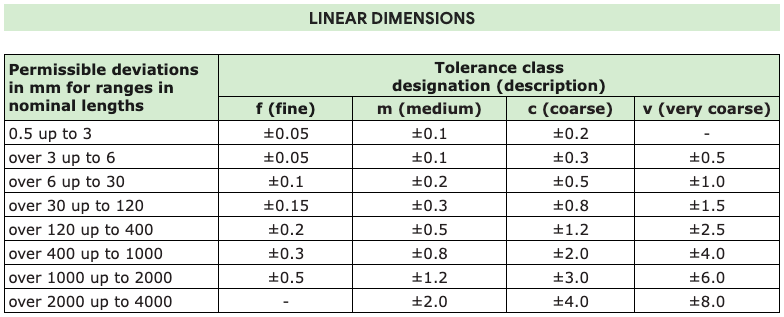
Part 1: Tolerances for linear and angular dimensions without individual tolerance indications
Published (Edition 1, 1989) This standard was last reviewed and confirmed in 2022. Therefore, this version remains current.
This part is intended to simplify drawing indications and specifies general tolerances in four tolerance classes. It applies to the dimensions of workpieces that are produced by metal removal or are formed from sheet metal. It contains three tables and an informative annex with regard to concepts behind general tolerancing of dimensions.
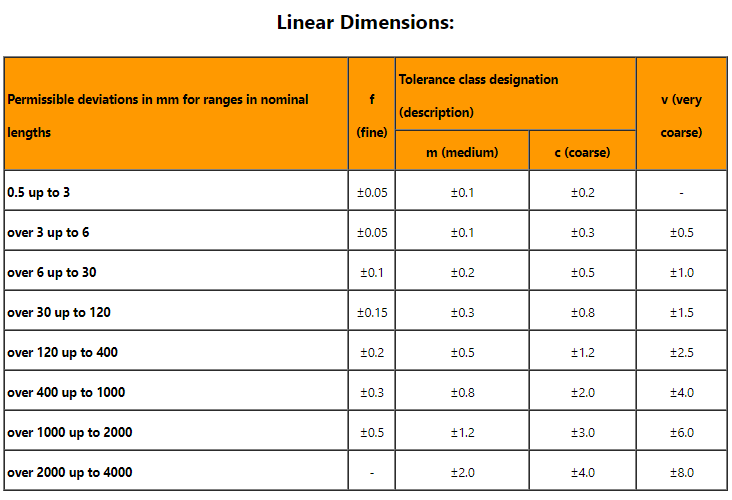
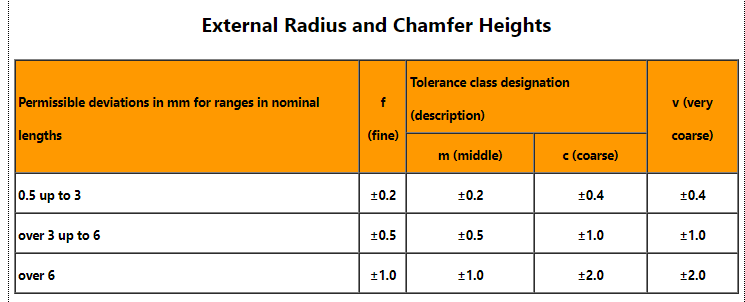
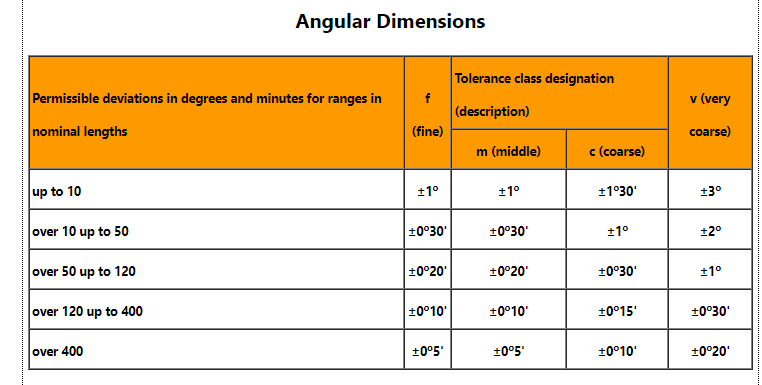
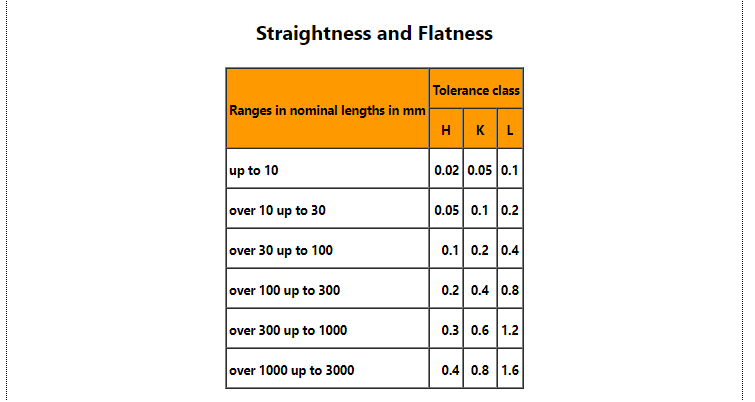
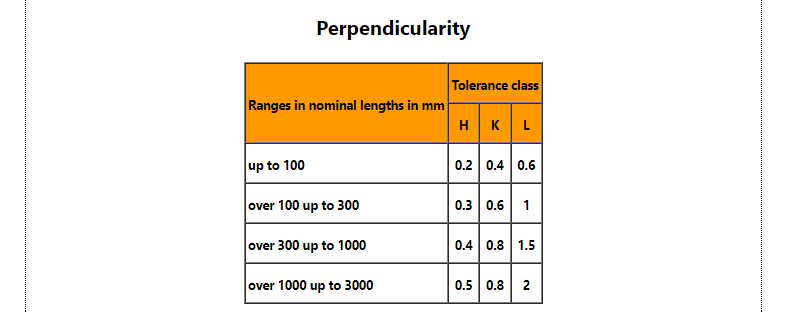
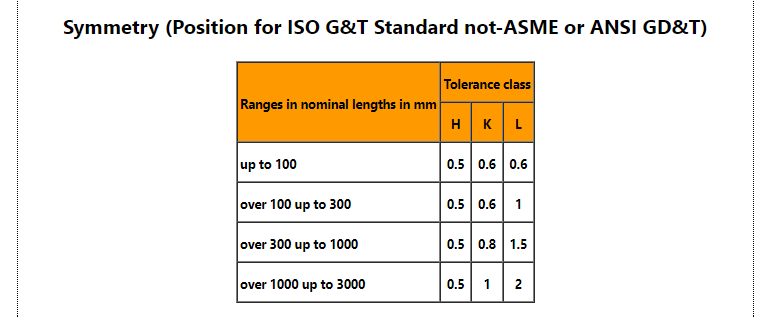
What is ISO 2768? A Guide to Tolerance Standards for CNC Machining
Determining the correct tolerances to apply to your product design can be challenging. There are natural variations amongst products that occur in mass production and you should plan for these deviations when you are applying tolerances to products.
That said, you can decide how much a fabricated product can deviate from the engineering drawing dimensions and still be accepted. In manufacturing, this range of acceptance is defined by tolerance limits. These tolerance ranges represent the variations between nominal dimensions (the original intention of the design) and the maximum and minimum values of a dimension that still guarantees a fit. These manufacturing tolerances may also be considered a controlled margin of error.
Download General Tolerances DIN ISO 2768 Chart Part 1 and Part 2 PDF
Applying ISO 2768 to a Drawing
In order to understand the content of this standard and its parts, it’s best to use a real world example. Figure 1 shows a vehicle engine with a compressor for AC. The component that supports the compressor and connects it to the engine is our focus; we’ll call it the “compressor base”. Our compressor base prototype example will be made from an aluminum casting, then machined and drilled.
The Basics of General Tolerance Standard – ISO 2768-mK
Every feature on products or parts has a size and a geometrical shape. To ensure that the size and geometry of all features are made as required, we should carefully take care of the tolerancing on the drawing. Nothing shall be implied or left to interpretation in the workshop or inspection department. General tolerances for size and geometry make it easier to ensure that the size and geometry of all features can be done as requested.
What is ISO 2768?
The ISO 2768 series of standards were developed by the International Organization for Standardization to provide general tolerances for linear and angular dimensions without individual tolerance indications on technical drawings. Since individual tolerances aren’t provided, the designer must ensure that products made to the drawings will function properly.
What is ISO 2768-mK Meaning?
ISO 2768-mK means the dimension information for which the tolerances are not specified will be followed according to the m and K class. m class is specified in ISO 2768-1, and the K class is specified in ISO 2768-2, which includes H, K, and L tolerance levels.
The following is a summary of ISO 2768-1 and ISO 2768-2 specifications:
#1 General Tolerances ISO 2768-1
ISO 2768-1 stands for the general tolerances for linear and angular dimensions without individual tolerance indications, ISO 2768-1 indicates the linear dimensions and angular dimensions such as external sizes, internal sizes, step sizes, diameters, radii, distances, external radii, and chamfer heights for broken edges. This standard covers general tolerances in three 4 classes of tolerance:
M – Medium tolerances
F – Fine tolerances
C – Coarse tolerances
V – Very coarse tolerances











